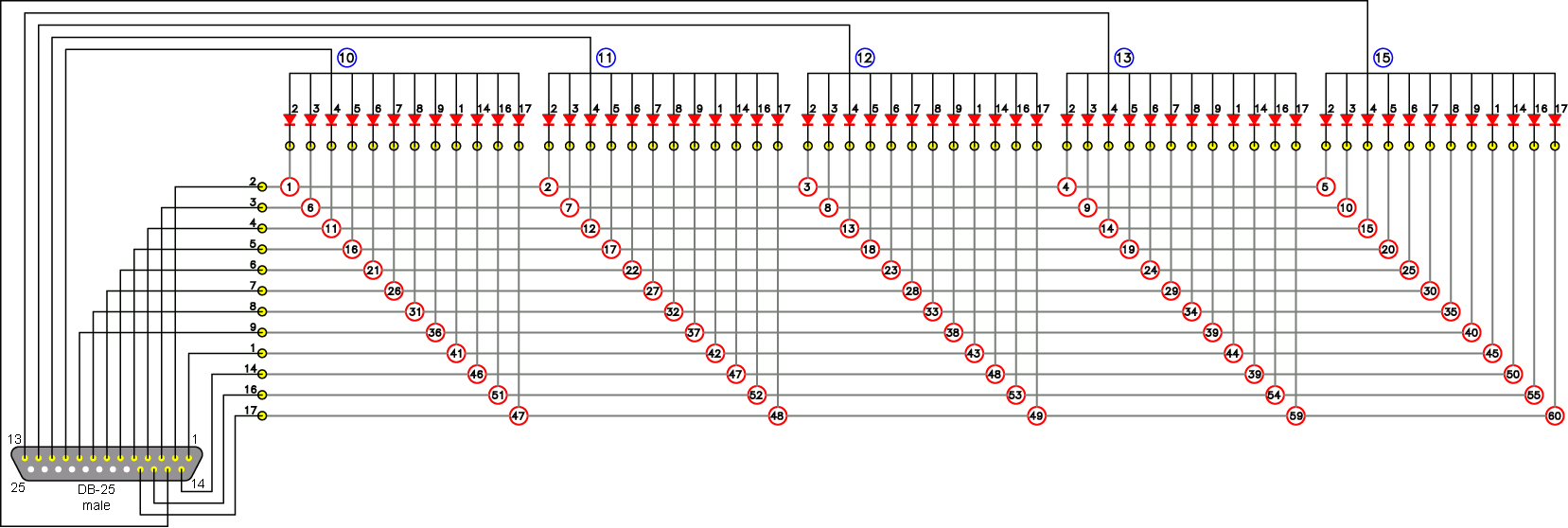The LPT Switch is an interface from the parallel port of a computer to arcade controls. It allows you to connect a total of 60 inputs directly to the computer without any ghosting or blocking. With the appropriate software, these inputs are translated into either a windows joystick device, or into standard keyboard keystrokes. It's incredibly cheap to make, and supports more inputs than most keyboard encoders.
The following image shows how to wire up the LPT Switch. For those who don't know, the little red triangles are diodes. Just about any diodes can be used, but the proper type are the glass switching diodes (any part number will do). The yellow circles with numbers next to them are simply an indicator of what pin on the parallel port is connected to each row. It's easier than tracing back to the plug every time. The numbered red circles indicate the button number that will be register by the software.
The image is rather large, so click on it to see the whole thing.

I know some of you might have trouble reading the schematic, so here's a link to help you build the interface:
LPT Switch on Project Fokker 50
Got it built yet? No? Well, here are some software links to hold you over until you build it.
PPJoy--A joystick device driver for windows.
SNESKey--This generates keystrokes from the interface.
It supports both DOS and windows, but you must write your own config files to use the LPT Switch (don't ask me how).
If someone gets this working, please Let me know.
Project Fokker 50 also has a program that generates keystrokes, but it's for windows only.
It's probably the easiest one to use, but it keeps crashing on my system. Here's a mirror copy of the latest version I was able to find.
If anyone has any comments or needs help building this, feel free to contact me.